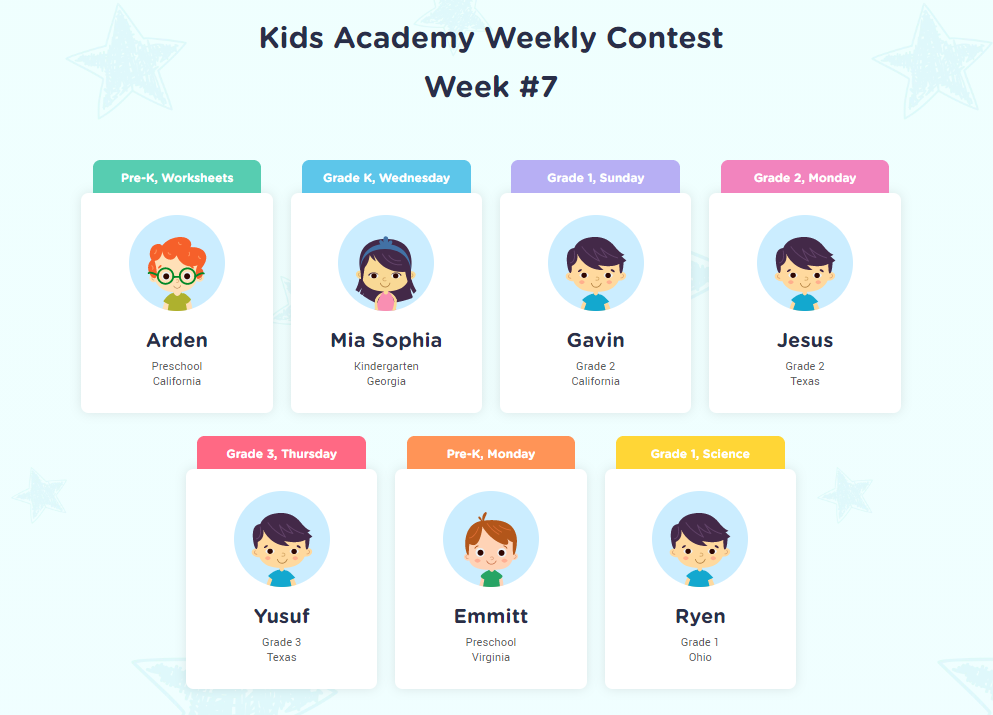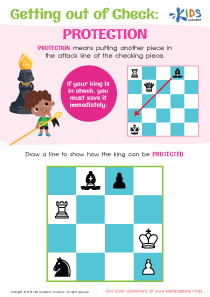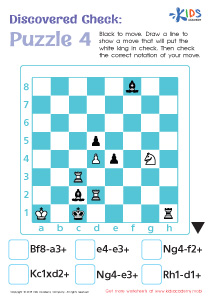Chess Worksheets for Ages 6-8
86 filtered results
-
From - To
Introduce young minds to the strategic world of chess with our engaging and educational chess worksheets, specifically tailored for ages 6-8. These printable worksheets from Kids Academy provide fun, interactive exercises that help kids grasp the fundamentals of chess, enhance their critical thinking, and improve problem-solving skills. Each worksheet offers step-by-step instructions, colorful illustrations, and challenging puzzles that make learning chess exciting and accessible for beginners. Perfect for home or classroom use, our chess worksheets are designed to boost confidence and nurture a lifelong love for the game. Download today and watch your child's cognitive skills soar!
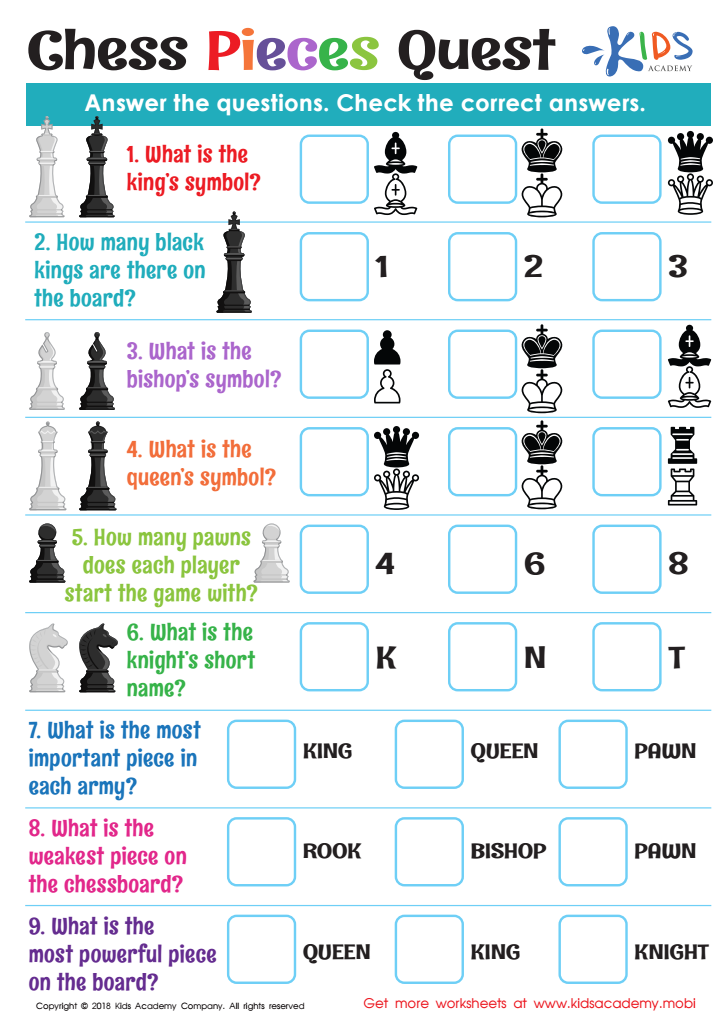

Chess Pieces Quest Worksheet


Notation of Moves Writing it Down Worksheet
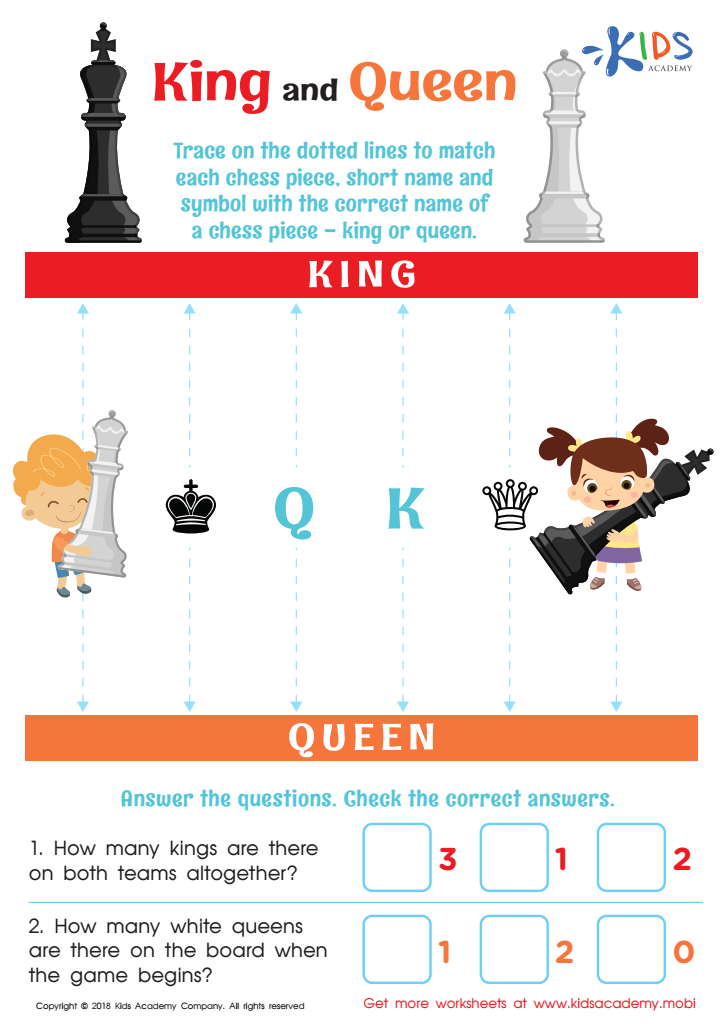

King and Queen Worksheet
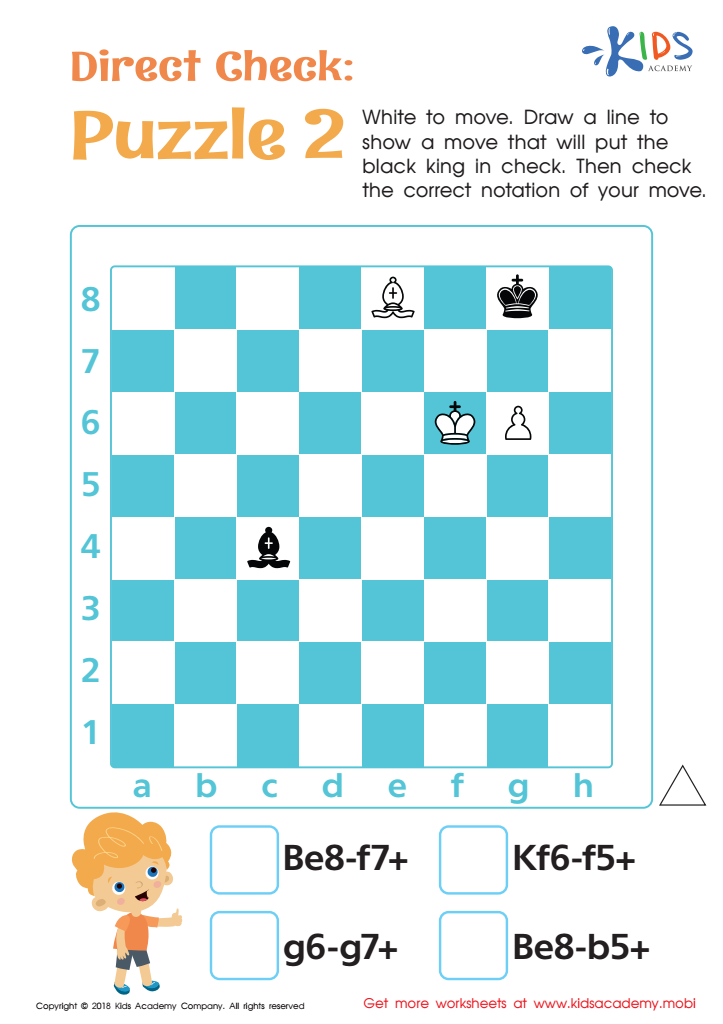

Direct Check: Puzzle 2 Worksheet
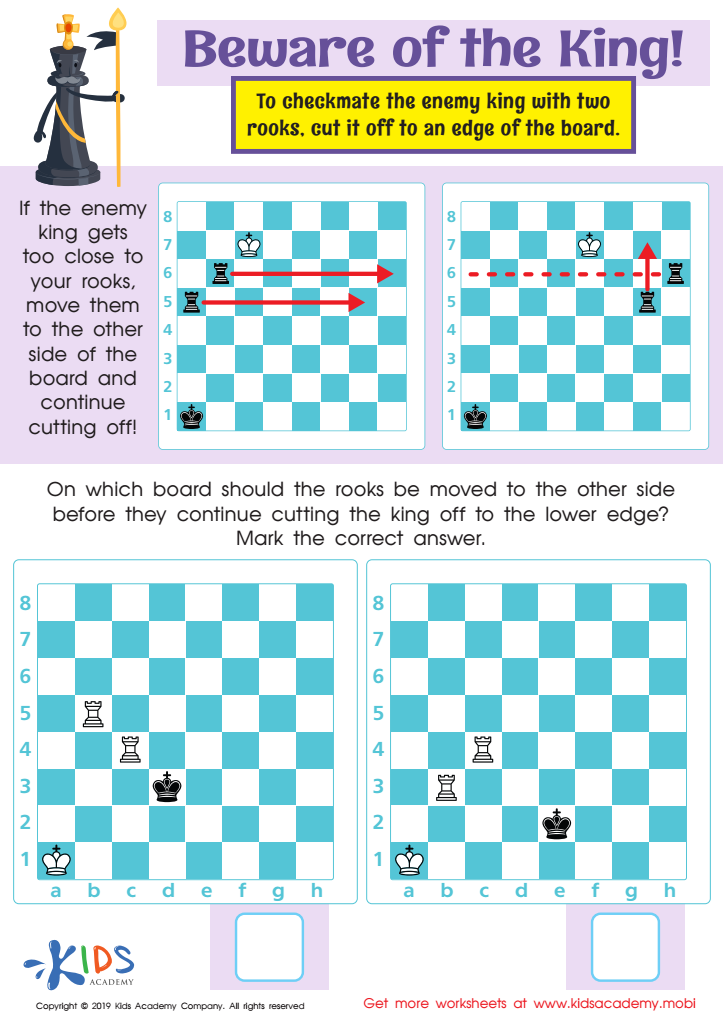

Beware of the King! Worksheet
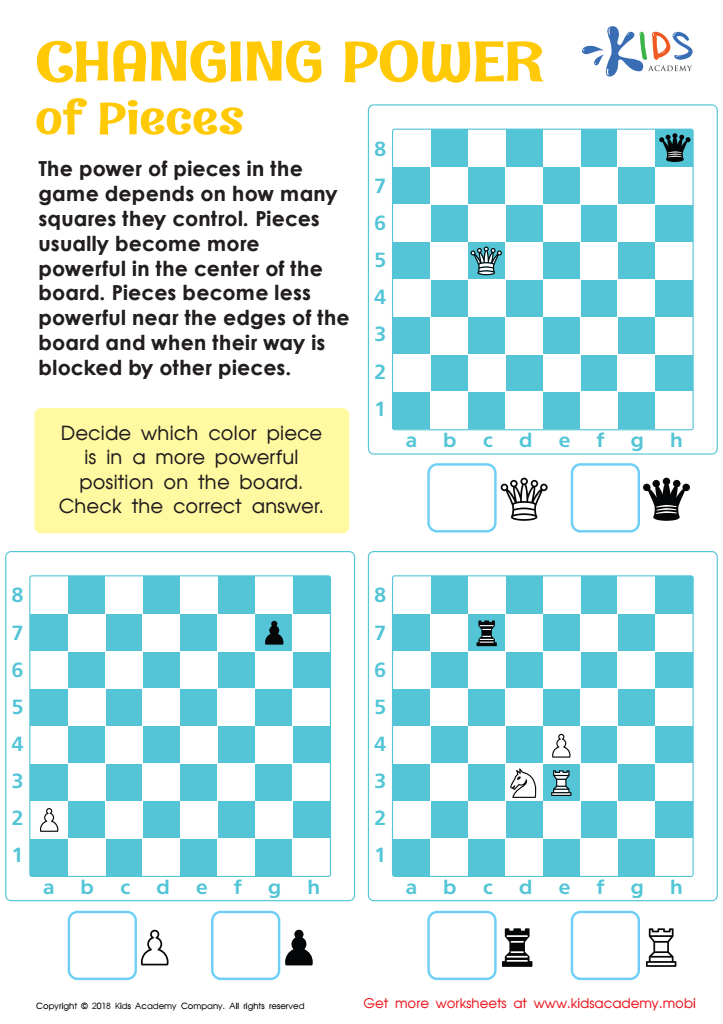

Changing Power of Chess Pieces Worksheet
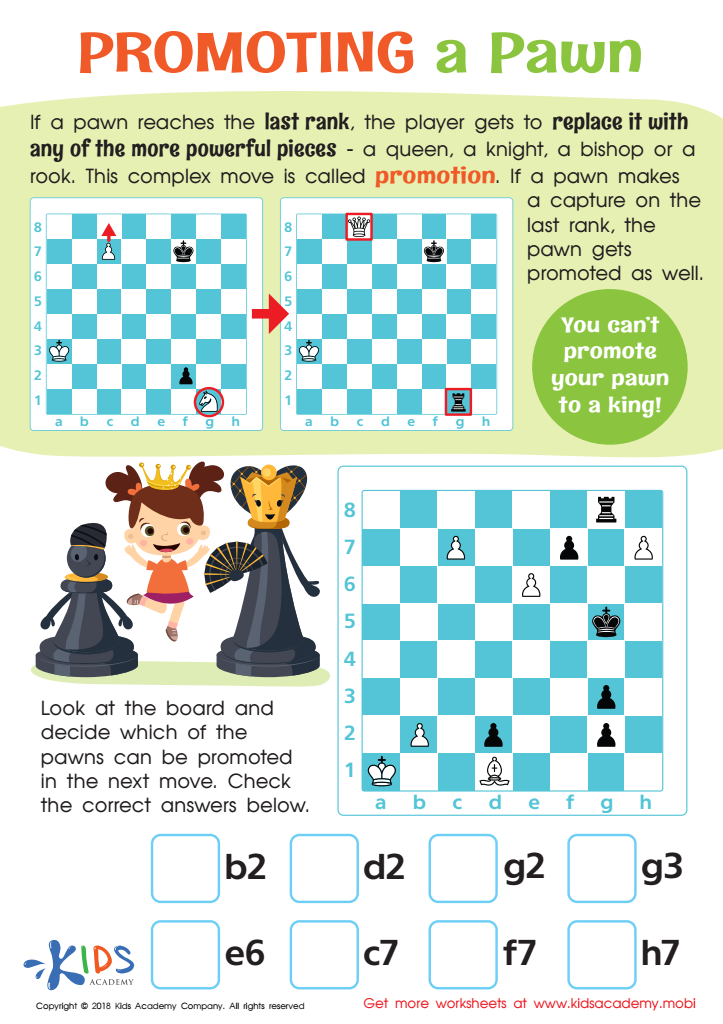

Promoting a Pawn Worksheet
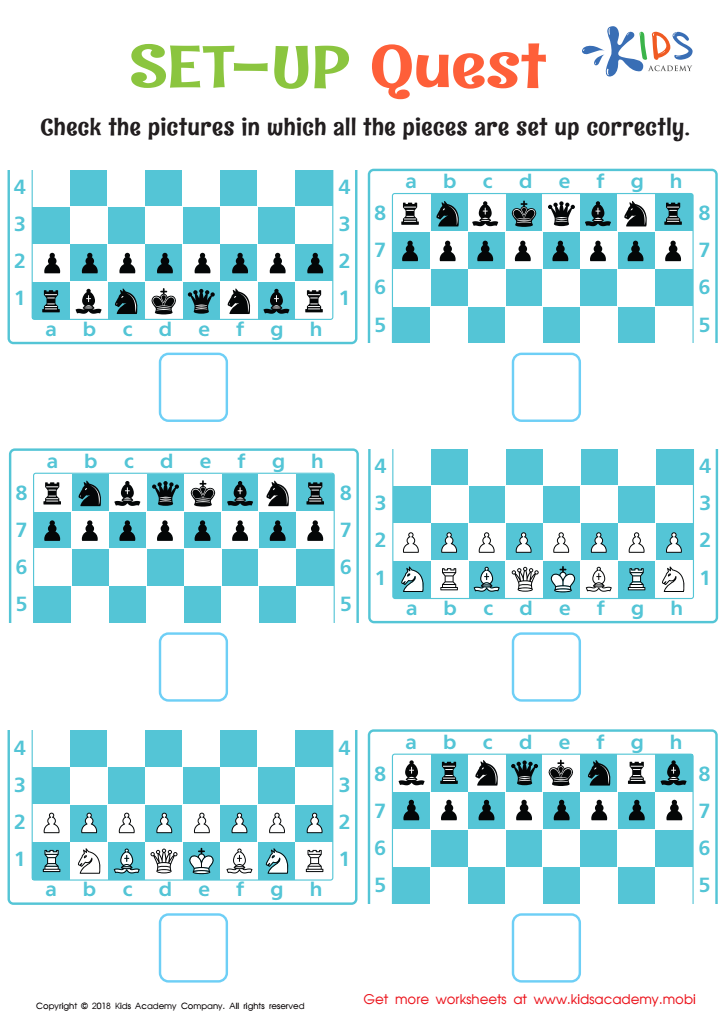

Set-up Quest Worksheet
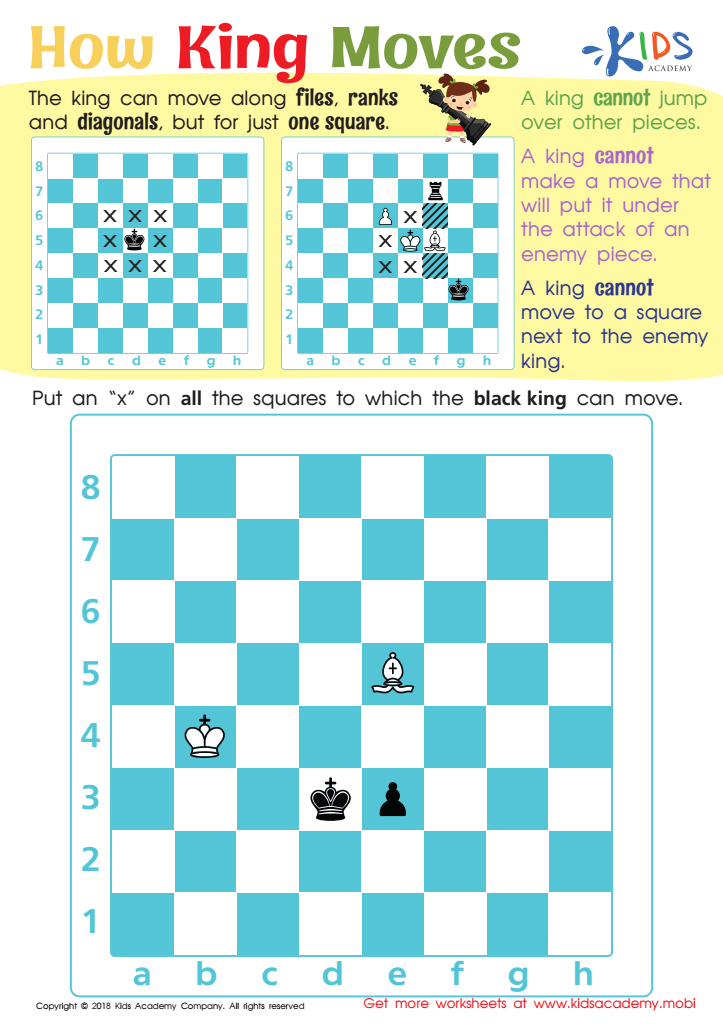

How King Moves Worksheet
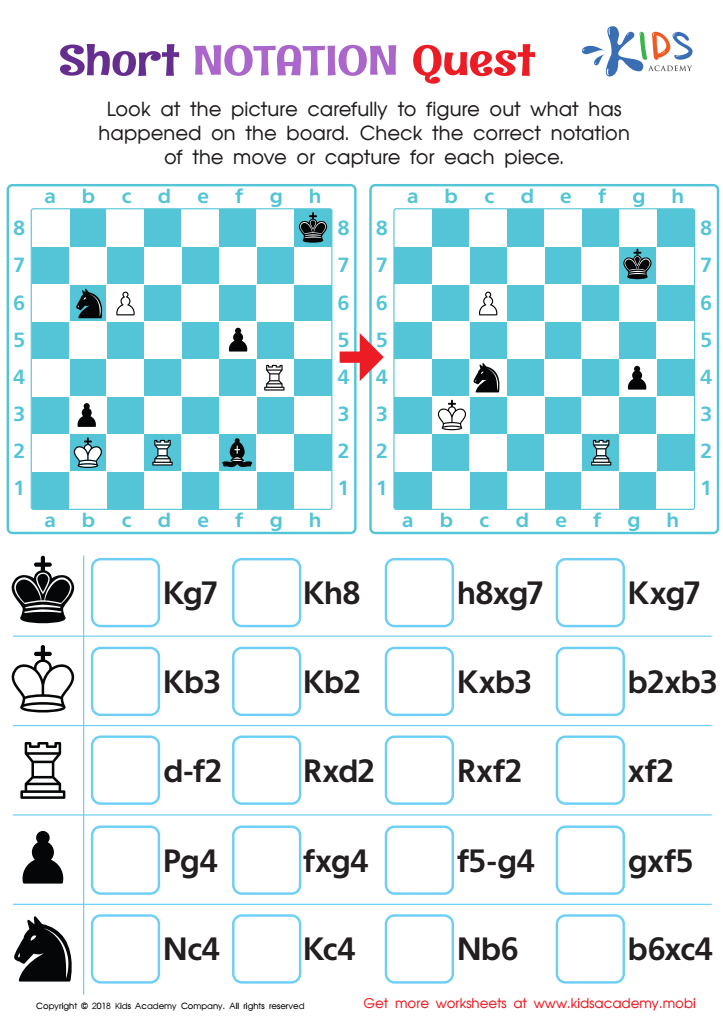

Short Notation Quest Worksheet
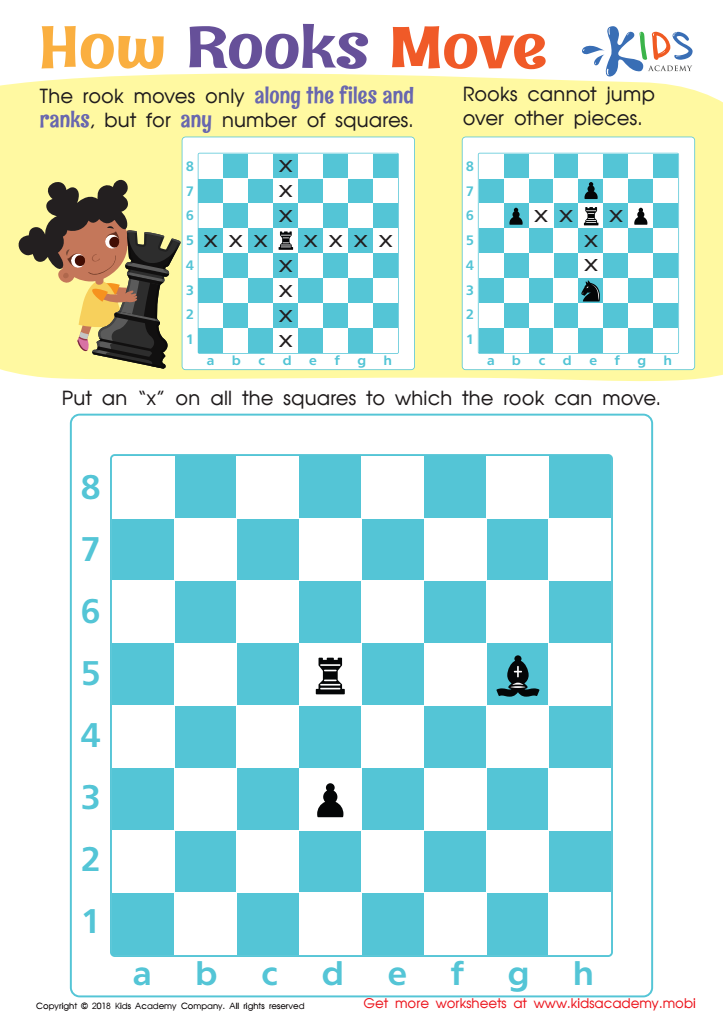

How Rooks Move Worksheet
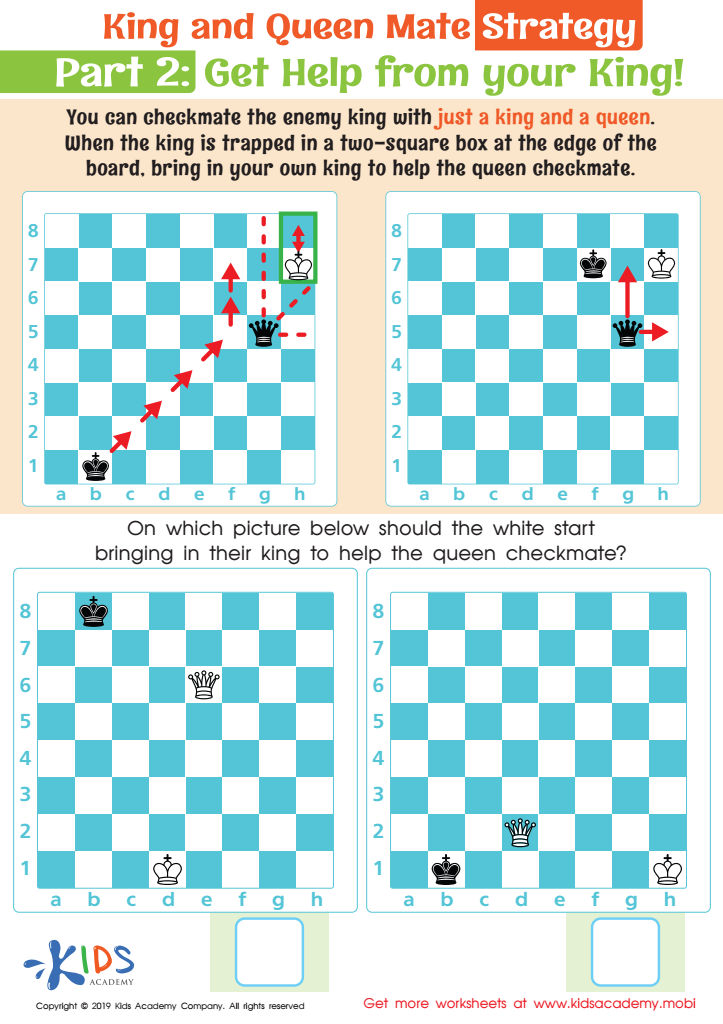

King and Queen Mate Strategy: Part 2 Worksheet
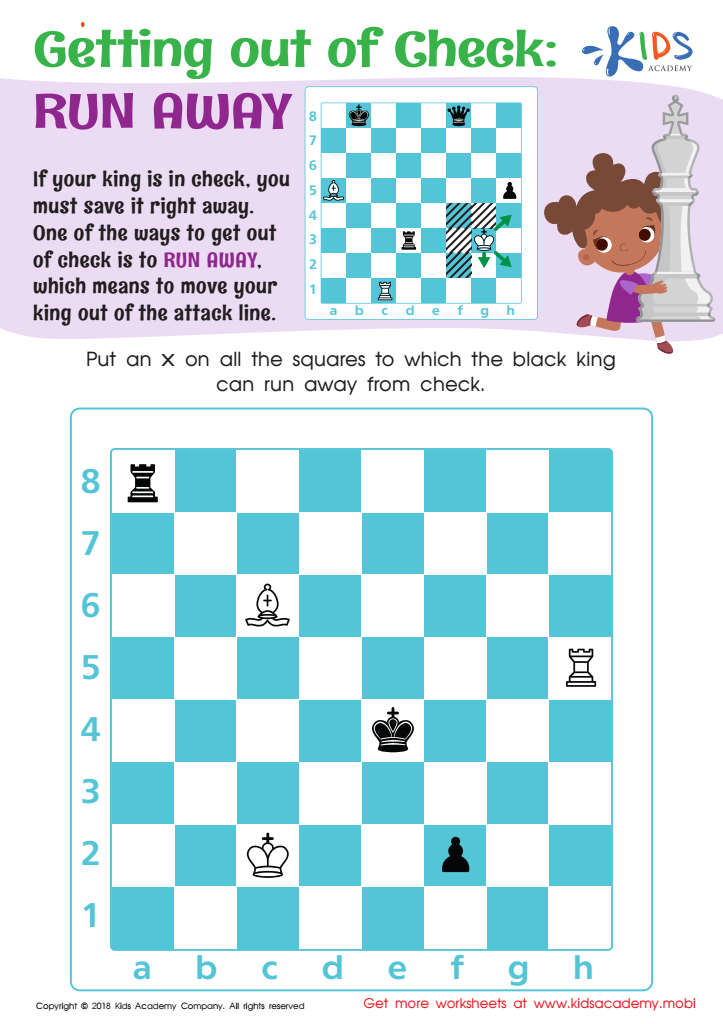

Getting out of Check: Run Away Worksheet
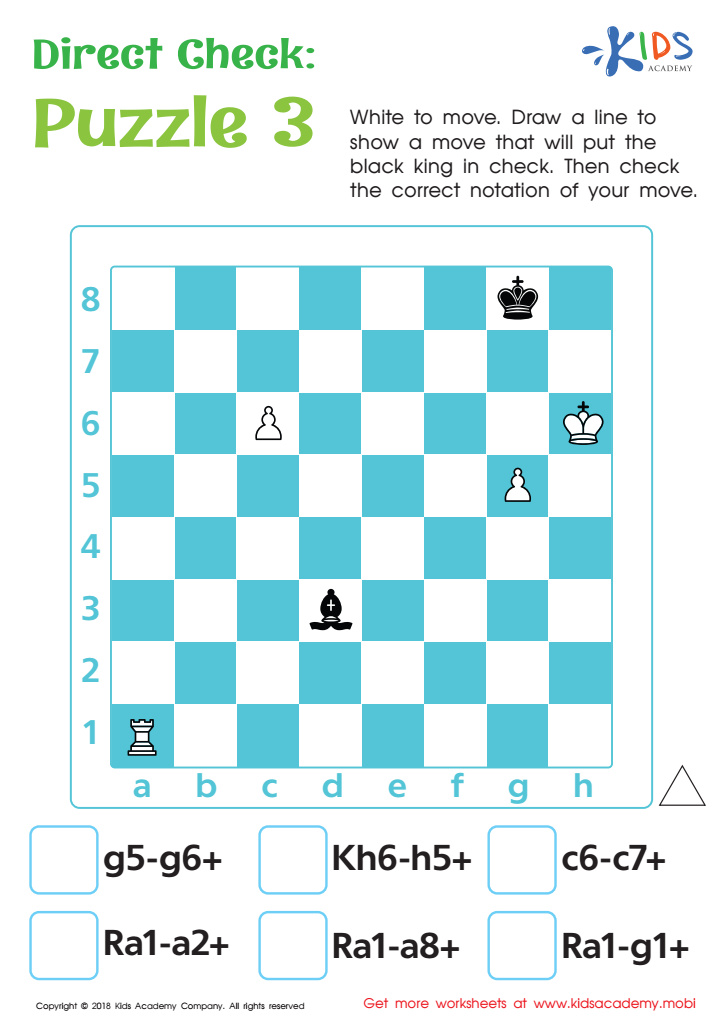

Direct Check: Puzzle 3 Worksheet
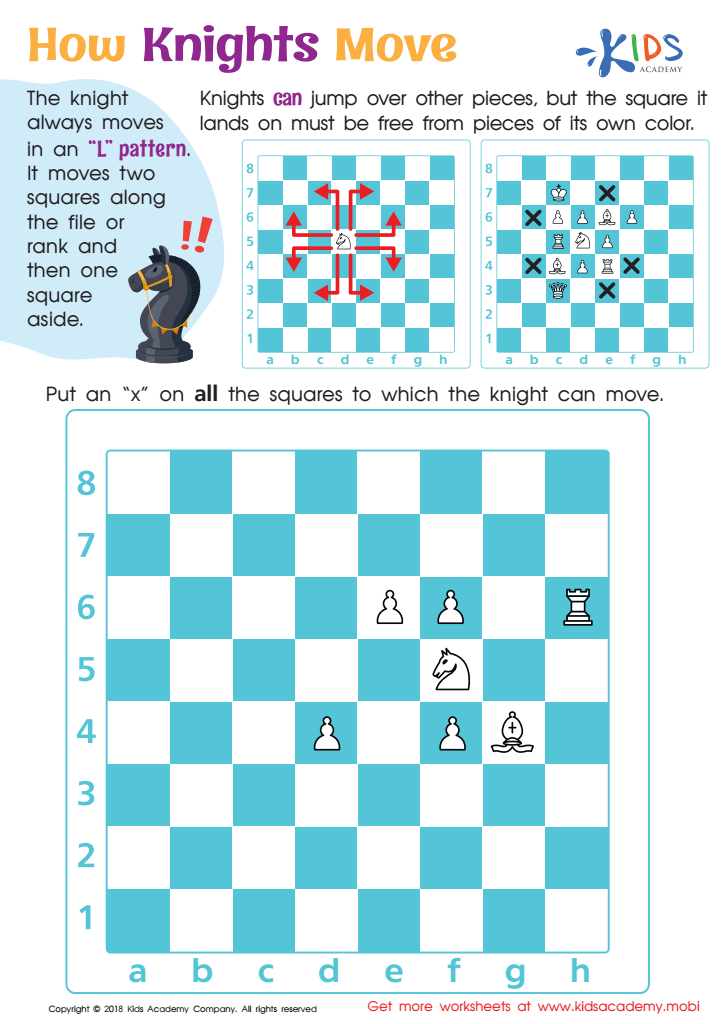

How Knights Move Worksheet
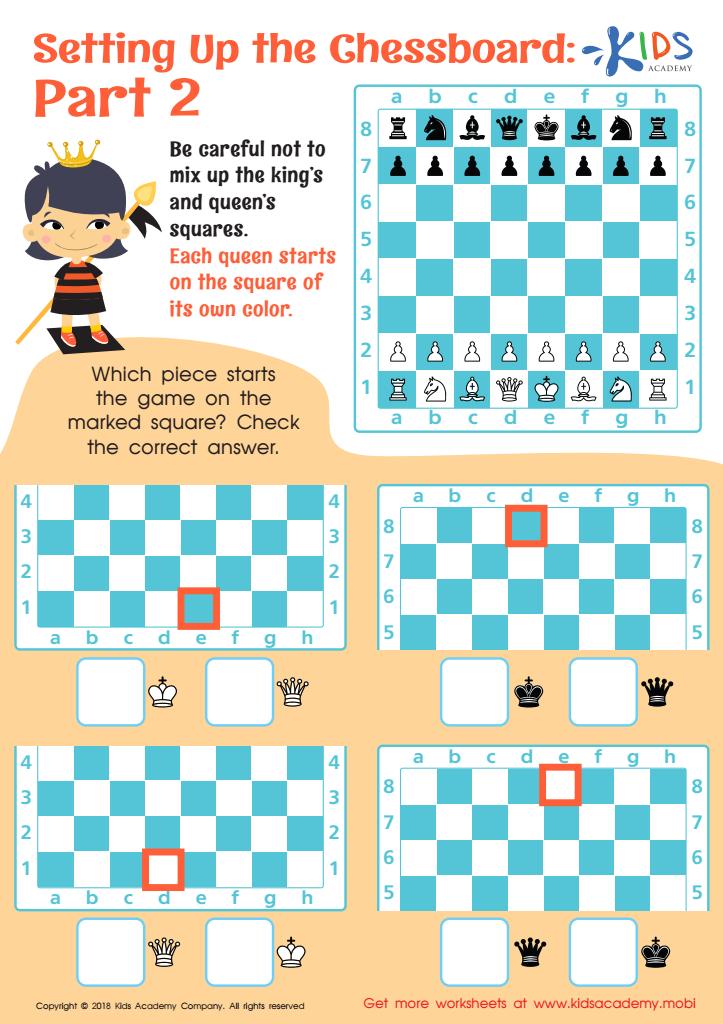

Setting up the Chessboard: Part 2 Worksheet
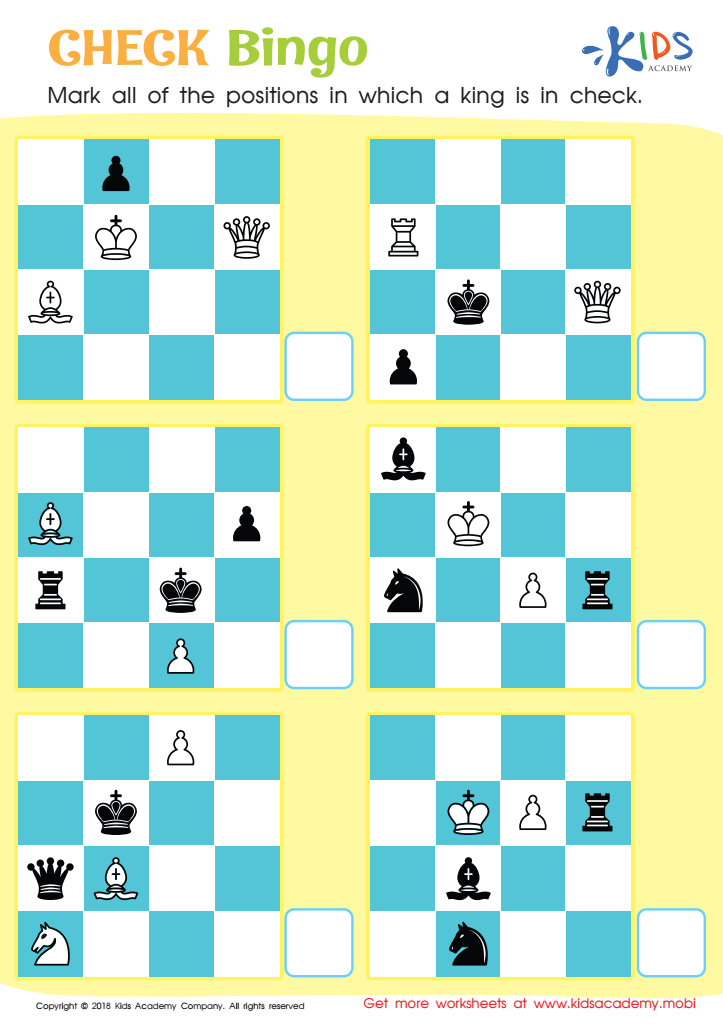

Check Bingo Worksheet
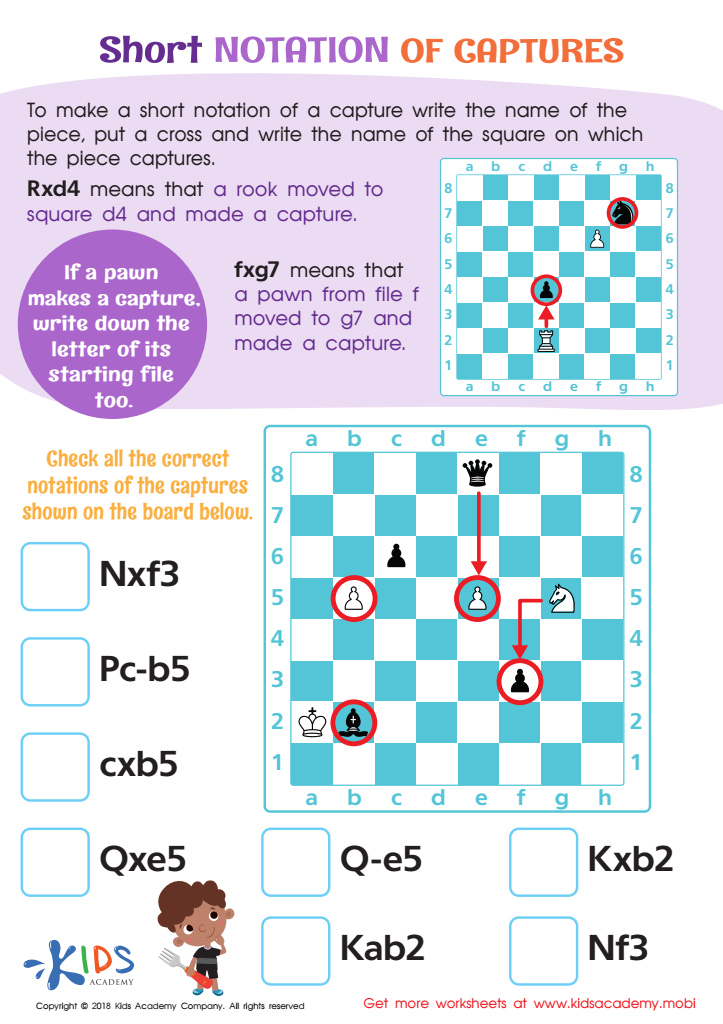

Short Notation of Captures Worksheet
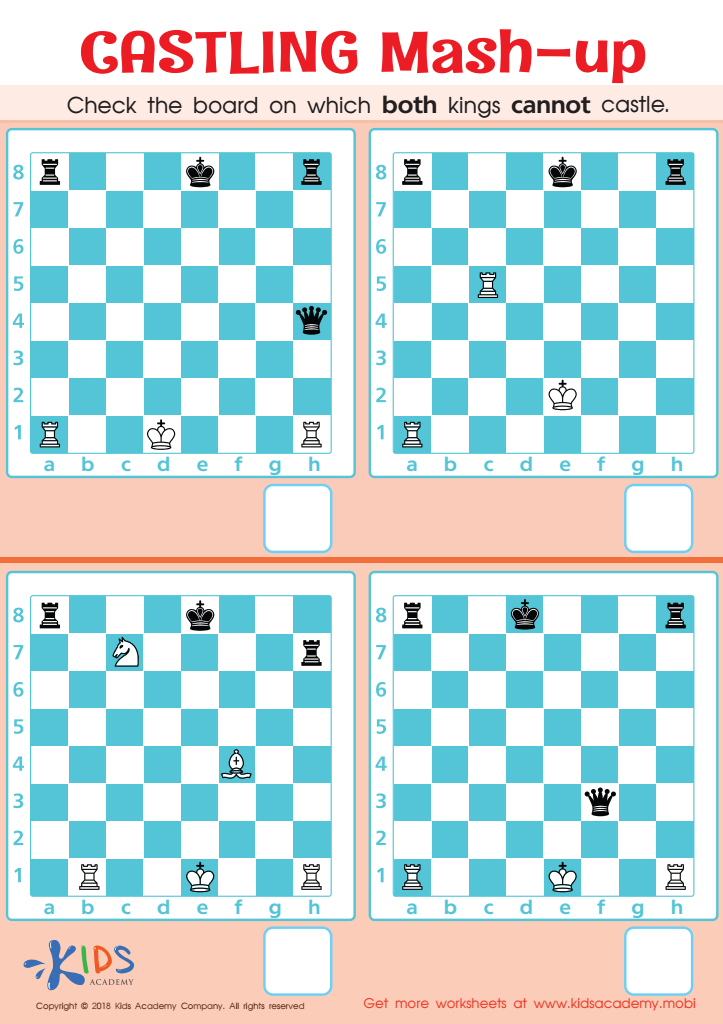

Castling Mash–up Worksheet
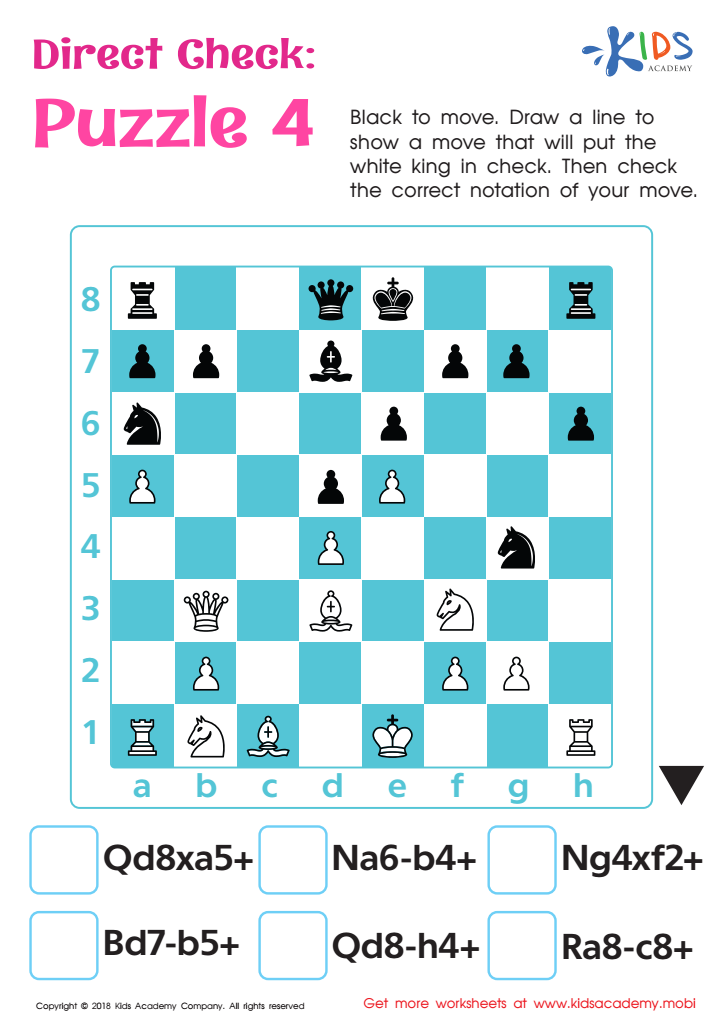

Direct Check: Puzzle 4 Worksheet


King and Queen Mate Strategy: Part 1 Worksheet
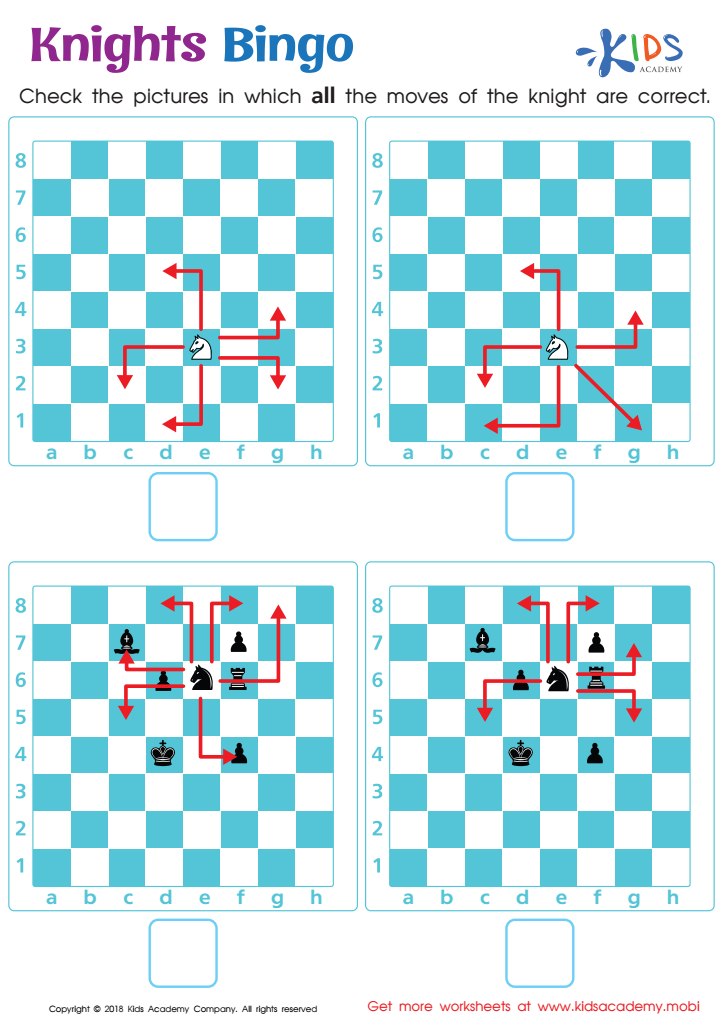

Knights Bingo Worksheet
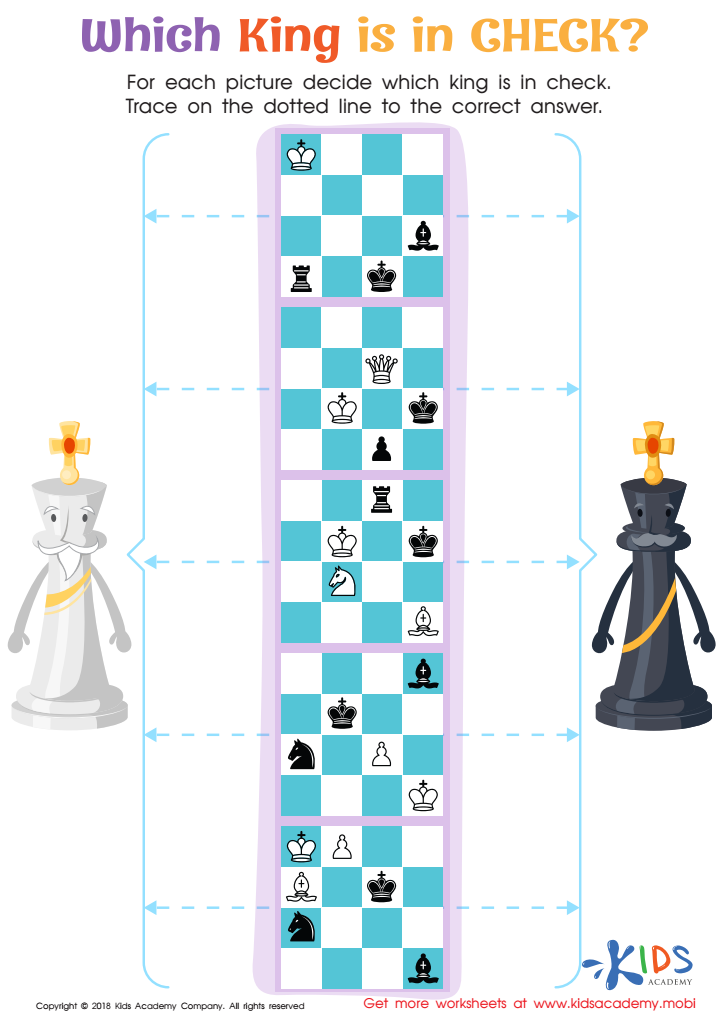

Which King is in Check? Worksheet
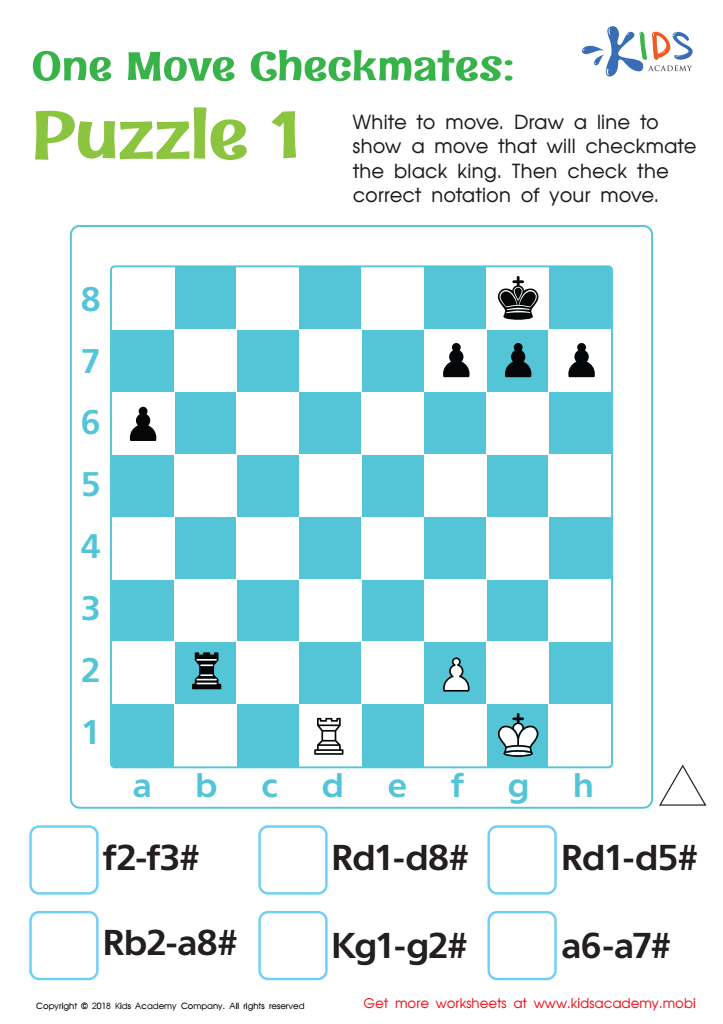

One Move Checkmates: Puzzle 1 Worksheet
Chess is an invaluable tool for young learners aged 6-8, offering significant cognitive and emotional benefits that parents and teachers should consider. First and foremost, chess nurtures critical thinking and problem-solving skills. The game teaches children to evaluate situations, plan strategically, and make decisions based on logical reasoning, which are essential abilities both in academics and everyday life.
Moreover, playing chess fosters concentration and patience. Young minds are often distracted quickly, but chess demands sustained attention and perseverance, helping to cultivate these crucial traits over time. As children contemplate their next move and anticipate their opponent's, they learn the importance of focus and delayed gratification.
Social interactions also blossom around chess boards. The game creates a structured environment for kids to practice good sportsmanship, turn-taking, and respectful competition. These experiences build emotional intelligence and interpersonal skills, which are beneficial both in school settings and in broader social contexts.
Chess is also known to boost mathematical skills such as pattern recognition and spatial awareness. As children grow accustomed to visually navigating the chess board, these capabilities translate well to other subjects, such as geometry and arithmetic.
Lastly, introducing chess at an early age can inspire a love for lifelong learning. It's both challenging and rewarding, making it a perfect educational tool that sharpens the mind while being fun. By investing time in chess, parents and teachers provide children with a robust foundation for future intellectual and emotional development.
 Assign to My Students
Assign to My Students



